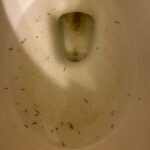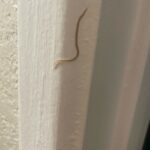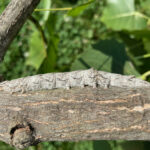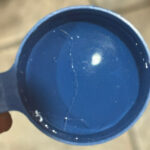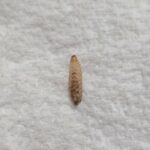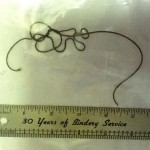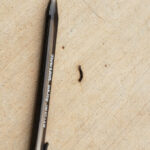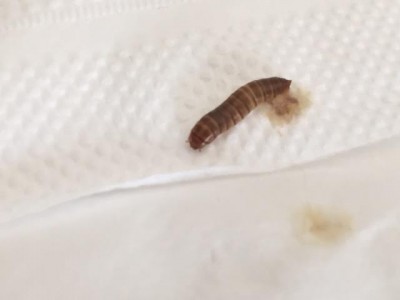There are several ways to control and prevent mealworms. But before we discuss control and prevention measures, continue reading to find out all about mealworms and their many uses.
About Mealworms
There are several types of worms that can be used as bait for fish, reptiles, and birds. Two of the most popular types of worms used as bait for fish, reptiles, and birds are the baitworm and the mealworm. Mealworms are the larva of the mealworm beetle, which is a species of darkling beetle. Because of their high protein content, mealworms are mostly used as a food source, but they can also be used for composting. The market for mealworms is so demanding that they can be purchased at just about any pet store. Mealworms come in large containers filled with bran or oatmeal.
Believe it or not, the market for baitworms is just as huge and the marker for meal worms in the U.S. and most other parts of the world. It is estimated that in the state of Maine alone, more than 200 tons of bait worms are produced each year and in the UK, more than 700 tons are produced each year for both commercial and personal use. Japan, on the other hand, actually imports more than 600 tons each year from around the world. The baitworm market overall is estimated in the billions and billions of dollars each year. Bait worms are typically used for fish bait, but they can also be used for personal use compost and/or in farming or commercial compost.
The most popular type of bait worm is the earthworm, specifically the “night crawler.” Night crawlers are typically found on the top of soil at night, hence the name “night crawler.” They are also called “dew worms” because their numbers tend to increase when the ground is moist. Night crawlers are quite large in size. They can measure up to ten inches in length and up to 0.39 inches in diameter. The night crawler, whose scientific name is Lumbricus terrestris, has a unique dark colored “head” with a light colored flattened tail. At first glance you won’t notice it, but the night crawlers body is covered with “setae,” which are tiny bristles that help the worm move through the dirt and it also helps the worm anchor it’s body when it comes time to protect itself against predators.
The night crawler has a protein packed segmented body. Each segment is filled with fluid and the segments surround the worm’s digestive tract. The digestive tract is the same length as the worm, whatever size he may be. The night crawler has a brain and hearts, but it has no eyes, ears, or lungs. They absorb oxygen through their smooth and slimy skin, which is always moist, and they “hear” through their ability to feel vibrations on the ground. Although they do not have eyes, night crawlers are very sensitive to light. If they remain in the light for too long, the results can be fatal. The same is true if the worm’s body dries out. In the sunlight, it is highly possible that the worm’s skin can dry out, so if they are not buried deep within the earth or the lower layers of top soil, during the day, they can be found under rocks or bricks or underneath leaves or debris.
Whether you are purchasing worms to use as bait or for compost or farming, you can purchase bait worms from just about anywhere. You can purchase them at pet stores, both large and small, from live bait and fish stores, and through literally hundreds of sellers and retailers online. Baitworms are relatively cheap too. You can expect to spend anywhere from $35-$50 for 500 live night crawlers in person or shipped to your door.
Mealworm Control and Prevention
Prevention
Mealworms are not always considered pests since some people raise them for fish and animal food. Because mealworms are raised for fish and animal food, they are not considered pests. If you feel that you have a mealworm infestation, however, there are several ways to control and prevent them.
·Use a good night-light to reduce beetle attraction and infestation indoors.
·Sanitation is one of the simplest means of controlling mealworms. If you have a significant amount of moist, dark, undisturbed areas that contain damp grain or milled cereals, you should eliminate them completely.
·In some cases, eggs and larvae of mealworms are accidentally eaten in cereals and breakfast foods. These infestations in foods and seeds can be eliminated by heating in a shallow pan in the oven at 130°F for 30 minutes or placed in a deep freeze at 0°F for seven days. It is important to keep in mind that seeds saved for planting may have the germination reduced after super heating or cooling.
·You can also collect individual mealworms with a broom and dustpan and crushing before disposal is useful.
Control
You can use pyrethrins (alone) or with a synergist to control mealworms. These chemicals have been used successfully for treatment of wooden floors or walls of empty granaries or warehouses. Insecticides labeled for mealworm control include:
·Pyrethrins (Pyrenone)
·Resmethrin (Synthrin)
·Silica gel (Drione, PT 230 Tri-Die)
When using insecticides, read the directions carefully and follow label directions to the letter. Always follow all safety precautions.
All About Worms is always free, always reader-supported. Your tips via CashApp, Venmo, or Paypal are appreciated! Receipts will come from ISIPP Publishing.



